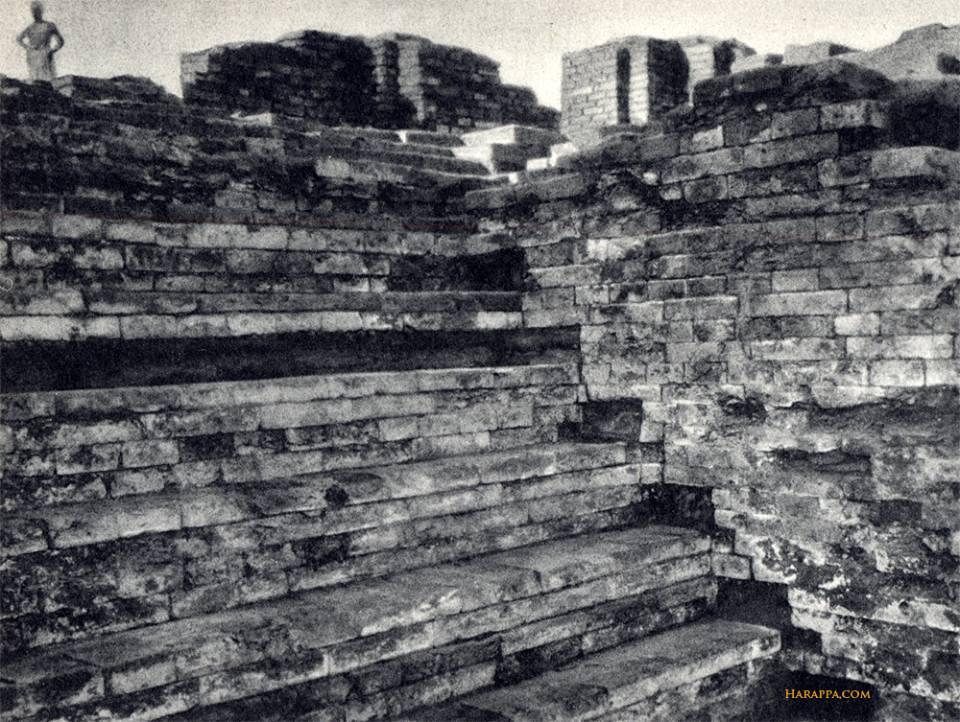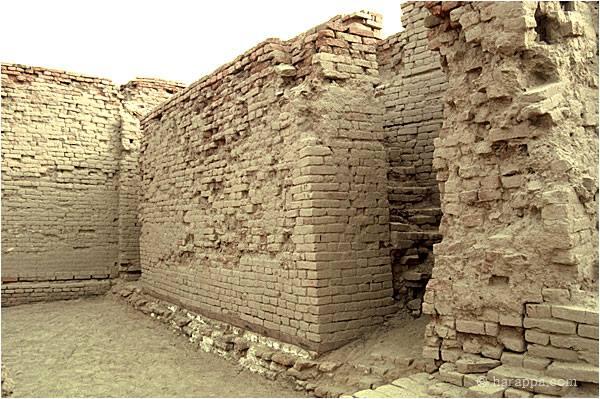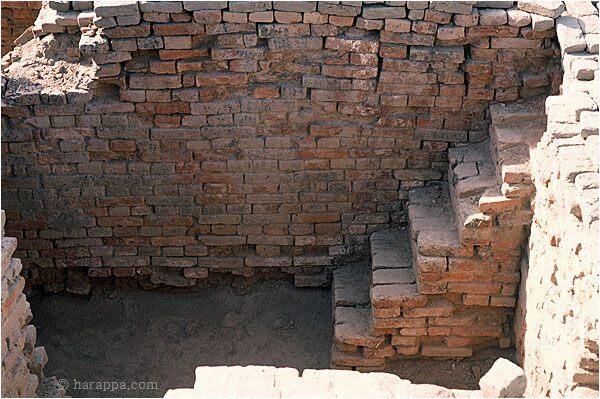By StephanieV. August 28th, 2014
From the southern steps of the Great Bath showing recesses for wooden treads and stairways to platforms of some among the 700 wells in Mohenjo-daro, glimpses of where the ancient Indus people trod every day.
"A curious feature of the two stairways leading down into the bath is the presence of a channel 9.25 inches wide and 3.25 inches deep, running parallel with and at the based of the lowest step of each. This channel penetrates into the two sides of each stairway for a distance of 3.5 inches.
At either end of each tread there is a recess of the same width as the tread and 3.25 inches high and deep (Plate XXVI, a [image 1]). Traces of bitumen were found in most of these holes, and wise of the stairways with a bituminous cement. ... That the covering of wood for the steps was conemplation from the first is evidenced by the holes at either end and the channel for timber at the base being part of the original design and not cut later."
(Ernest Mackay, SD Area, in Marshall, Mohenjo-daro and the Indus Civilization, p. 133).



![Mohenjo-daro Section A, Block 2. Steps leading from a courtyard to Well-chamber 10. "A flight of eights steps on the west side of Courtyard 6 leads up to Well No. I (Plate XLIII, b [shown]). This well, 3 ft. 5 in. in diameter, and lined with well-burnt, wedge-shaped bricks, was cleared to a depth of 41 feet, when 4 feet of water was obtained." (H. Hargreaves, HR Area,p. 179 in Marshall, Mohenjo-daro, p. 179).](https://www.harappa.com/sites/default/files/styles/galleryformatter_slide/public/10527879_10152694127179846_6988683163640873342_n.jpg)



![Mohenjo-daro Section A, Block 2. Steps leading from a courtyard to Well-chamber 10. "A flight of eights steps on the west side of Courtyard 6 leads up to Well No. I (Plate XLIII, b [shown]). This well, 3 ft. 5 in. in diameter, and lined with well-burnt, wedge-shaped bricks, was cleared to a depth of 41 feet, when 4 feet of water was obtained." (H. Hargreaves, HR Area,p. 179 in Marshall, Mohenjo-daro, p. 179).](https://www.harappa.com/sites/default/files/styles/galleryformatter_thumb/public/10527879_10152694127179846_6988683163640873342_n.jpg)
